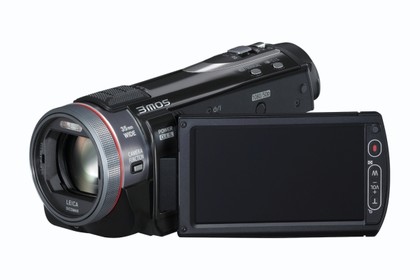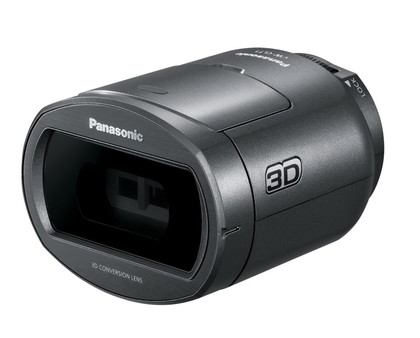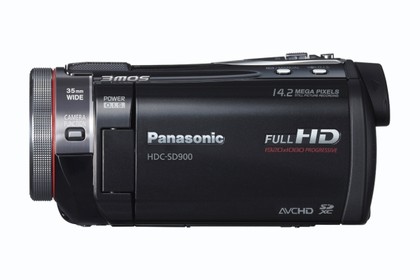TechRadar Verdict
Pros
- +
Superior movie quality
- +
Digital Cinema mode
- +
Tactile and large 3.5-inch touchscreen LCD
- +
Range of manual and advanced features
- +
Quality of 14.2MP stills
Cons
- -
Viewfinder too small/unnecessary
- -
Best audio requires external mic
- -
Practical 3D shooting still some way off
Why you can trust TechRadar
Panasonic is quite possibly trying to hit every target with the HDC-SD900 – and it may just do it. This is a Full HD 1920 x 1080/50p camcorder, which benefits from three 2.53MP sensors, uses the AVCHD recording format and has enough manual features and creative functions to keep even the most demanding movie maker happy.
The sub-£900 price only adds to the prospect that this could already be one of the best camcorders of the year. However, if you're thinking it's got all this functionality and can fit into a coat pocket you'll have to think again.
The SD900 is – relatively, you understand – a chunky camcorder, rather than a svelte pocket-friendly model. But thank heavens for that, because it means you can find and easily use the controls, and there are neat design touches such as the inclusion of a widescreen electronic viewfinder, 3.5-inch touchscreen LCD, manual control ring (for focus and zoom etc) and all the input/outputs you need.

The camcorder sits among two other similar models in Panasonic's 2011 3MOS range. While the SD900 records to SDHC and SDXC cards (it can record to SD but it's not recommended and our advice is not to try), the HS900 and TM900 provide alternative storage options.
The HS900 features a 220GB hard drive and SD card recording, but is heavier and costs over £1,150. The TM900 comes in at under £1,000 and uses a 32GB flash memory along with SD card recording. In terms of other major specifications the three camcorders are the same.
What's worth bearing in mind is that though the SD900 is the most affordable option of the three, you'll need to have at least an 8GB card installed in order to record for any practical duration. More SD cards mean more investment.
The SD900 offers the potential for 3D moviemaking, as do its siblings, and for that matter models in the less-expensive Panasonic 1MOS HD range. 3D recording is achieved by purchasing an additional 3D conversion lens, the VW-CLT1, which costs in excess of £200.
Sign up for breaking news, reviews, opinion, top tech deals, and more.

If you then also have a 3D TV and the appropriate glasses, it's possible to watch the movies you've made in 3D. On consumer camcorders, this is a technology in its infancy, and so please be prepared for your results to be a little less Hollywood than your ambitions might suggest.
What's certain to attract excitement and scrutiny is the way the SD900 has every base covered. It's a camcorder that likes to think it has the answer to everything. And, in the many ways, it has.
Aside from manual control over focus, white balance, shutter and iris – through the menu and using a rotating control ring around the suitably up-market Leica Dicomar lens – there are superb functions such as the Digital Cinema mode that alters shutter speed to create film-like footage. There's also the option of Timelapse recording at 10sec, 30sec, one minute and two minute intervals.

The advanced functions keep on coming too, with a Zebra pattern over-exposure warning mode, picture adjustment settings (for sharpness, colour, exposure, white balance) that can be made during recording, and a Histogram option giving vital information on exposure levels.
The creativity that's possible is quite stunning in its breadth, and it even extends to audio quality with mic level adjustments available, as well as our particular favourite: bass setting.
This mode lets users select from 0dB, +3dB and +6dB bass settings for the mic, and in many respects quells the oft-quoted criticism that camcorder's built-in microphones aren't capable of bass-y enough reproduction.
Trust us, there's even more to explore on this 'advanced feature' front.
